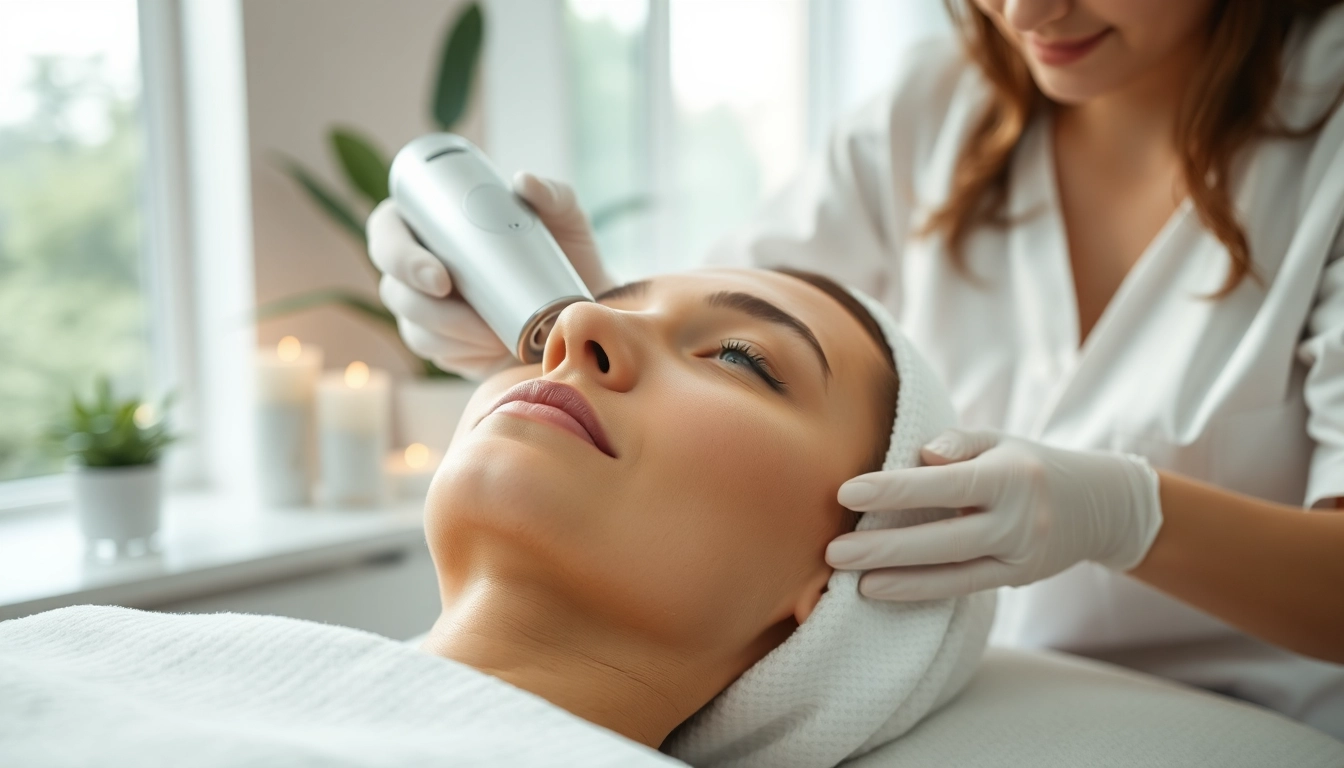Understanding Orthodontics
What is Orthodontics?
Orthodontics is a specialty branch of dentistry that focuses on diagnosing, preventing, and correcting misaligned teeth and jaws. This practice involves the application of various appliances and devices, such as braces and aligners, to straighten teeth, correct bite issues, and enhance overall oral health. While many associate orthodontics with teenagers, it’s important to note that people of all ages can benefit from orthodontic treatment, making it a valuable field for improving not only aesthetics but also functionality in one’s smile.
Common Orthodontic Treatments
There are several common orthodontic treatments designed to address a variety of teeth and jaw misalignments. Some of the most popular include:
- Traditional Metal Braces: These are the most common type of braces, made from high-grade stainless steel. They consist of brackets and wires that work together to gradually shift teeth into proper alignment.
- Ceramic Braces: Similar in function to metal braces, ceramic braces use clear or tooth-colored materials, making them less noticeable. They offer a more aesthetic option for those seeking treatment.
- Lingual Braces: These braces are applied to the back of the teeth, making them virtually invisible. They are an excellent choice for individuals concerned about the visual impact of traditional braces.
- Invisalign: This popular treatment uses a series of clear, removable aligners to gradually move teeth into their desired positions. Invisalign is known for its comfort and aesthetics, often appealing to adults and teens alike.
- Retainers: After completing orthodontic treatment, patients are usually required to wear retainers to maintain their new smile. Retainers prevent teeth from shifting back to their original positions and come in various forms, including fixed or removable.
Benefits of Orthodontic Care
Investing in orthodontic care can yield numerous long-term benefits. These can range from enhanced self-esteem to improved oral health. Key advantages include:
- Improved Aesthetics: One of the most immediate benefits of orthodontic treatment is a straighter, more attractive smile. This can lead to greater self-confidence and a positive self-image.
- Enhanced Oral Health: Misaligned teeth can contribute to issues such as gum disease, tooth decay, and jaw pain. Orthodontics helps to alleviate these problems by promoting better oral hygiene practices.
- Better Functionality: Correctly aligned teeth and jaws improve chewing and speaking abilities. Additionally, they can reduce wear on teeth and stress on the jaw muscles.
- Long-term Cost Savings: By addressing issues early on, orthodontic treatment can reduce the risk of more expensive dental procedures in the future, ultimately saving you money.
What to Look for in an Orthodontic Provider
Credentials and Experience
When searching for an orthodontist, one of the most critical factors to consider is their credentials and experience. It’s essential to ensure that your orthodontist is board-certified, indicating that they have undergone comprehensive training and possess the necessary qualifications. Look for an orthodontist who has extensive experience in the field, as this often translates into better treatment outcomes. Additionally, consider the types of treatments they specialize in—an orthodontist who is well-versed in various approaches may offer a more tailored experience based on individual needs.
Patient Reviews and Testimonials
Another vital aspect of choosing an orthodontic provider is examining patient reviews and testimonials. Online platforms such as Google Reviews and social media can provide valuable insights into an orthodontist’s reputation and the level of satisfaction experienced by former patients. Positive feedback often highlights not just the effectiveness of the treatment but also the overall patient experience, from the office environment to staff friendliness. Don’t hesitate to ask for recommendations from family or friends who have undergone orthodontic treatment as well.
Services Offered
The range of services offered by an orthodontist is another factor to consider. Some practices may only provide traditional braces, while others offer a complete suite of treatments that can fulfill various patient needs. It’s beneficial to find an orthodontic office that is well-equipped with the latest technologies, such as digital scanning and 3D imaging systems, to enhance treatment accuracy. Look for providers who also offer flexible appointment scheduling and comprehensive follow-up care to ensure you receive the support needed throughout your orthodontic journey.
Searching for Orthodontic Near Me
Using Online Tools and Apps
With technological advancements, finding an orthodontic near me has become easier than ever. Leveraging online tools, such as search engines and dedicated healthcare apps, can significantly simplify your search process. By typing “orthodontic near me” into a search engine, you can find qualified orthodontists in your vicinity, complete with ratings and reviews to help inform your decision. Additionally, many orthodontic practices now have their own websites and social media channels, providing valuable information about services, office hours, and more.
Local Recommendations and Referrals
While online searches are effective, personal recommendations from local friends, family, or general dentists can be invaluable. Oftentimes, those within your community have firsthand experience with certain orthodontic providers, enabling them to provide insight into the quality of care and results. If you’re starting from scratch, speaking with your general dentist can also help narrow down reputable orthodontists, as they are often familiar with their colleagues’ work and specialties.
Questions to Ask During Consultations
Once you’ve narrowed down potential orthodontic practices, scheduling consultations is essential. This allows you to meet the orthodontist, view the office environment, and gather important information. Prepare a list of questions to ask during the consultation to gain clarity on the treatment process, estimated timelines, potential discomfort, and how to manage any post-treatment care. Engaging in open communication with your orthodontist can help ensure a successful treatment experience.
Cost Considerations for Orthodontic Treatment
Understanding Pricing Structures
Understanding the cost of orthodontic treatment is crucial for making informed financing decisions. Pricing can vary significantly based on several factors, including the complexity of the dental issue, the type of treatment utilized, and the geographical location of the practice. Generally, traditional metal braces tend to be more affordable than options like Invisalign or ceramic braces. Additionally, life in urban settings may see higher prices due to increased demand and cost of living. Always inquire about the detailed breakdown of the costs involved to avoid surprises later on.
Insurance and Financing Options
Many insurance plans cover a portion of orthodontic treatment costs, particularly for minors. It’s essential to check with your insurance provider regarding your specific coverage to understand the financial implications better. Additionally, many orthodontic offices offer flexible financing plans or payment options to help accommodate different budget levels. Make sure to ask about any available payment plans during your consultation; this can alleviate financial stress while ensuring you receive the necessary care.
Value Beyond Cost
While cost is undoubtedly an important consideration, it’s essential to view orthodontics through a broader lens. The value of orthodontic care extends beyond mere financial analysis. A well-aligned smile can significantly improve your quality of life, affecting everything from personal confidence to dental hygiene. Additionally, investing in orthodontics now may prevent more costly procedures down the line. Rather than solely focusing on the upfront cost, weigh the long-term benefits that a healthy, well-aligned smile can provide.
Maintaining Oral Health During Orthodontic Care
Daily Care Recommendations
Maintaining oral health during orthodontic treatment is essential for ensuring treatment effectiveness and preventing complications. Here are key daily care recommendations:
- Brushing and Flossing: Patients should brush at least twice daily and after meals, especially if wearing braces. Special orthodontic toothbrushes and floss threaders can assist in cleaning around brackets and wires.
- Use of Mouthwash: Antibacterial mouthwash can help control plaque buildup around braces. It’s a good complement to regular brushing and flossing.
- Avoid Certain Foods: Certain foods such as hard candies, popcorn, and sticky snacks can damage braces. It’s best to keep your diet accommodating to your orthodontic treatment.
Common Issues and Solutions
During orthodontic treatment, you might encounter common issues such as discomfort, loose brackets, or broken wires. If discomfort arises, over-the-counter pain relief can help. In the case of loose brackets or broken wires, promptly contact your orthodontist to schedule a repair appointment. Ignoring these issues can lead to setbacks in treatment progress.
Follow-Up Visits and Adjustments
Regular follow-up visits are vital for monitoring your progress and making necessary adjustments. Your orthodontist will check how well your teeth are shifting and may change wires or tighten braces as needed. Stay diligent about attending these appointments, as they are pivotal for ensuring the successful completion of your treatment plan.















Leave a Reply